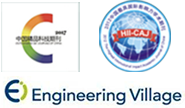Abstract:
Bipolar membranes (BPMs), as a novel type of ion exchange membrane, possess the unique ability to controllably generate and directionally separate H
+ and OH
−, making them widely applicable in industries such as resource regeneration, chemical processing, food production, energy conversion, and storage. This significantly broadens the application scope of advanced composite materials. In recent years, the design, development, and application of highly efficient water dissociation catalysts have become a research focus for BPMs, with metal-organic frameworks (MOFs) gaining considerable attention due to their excellent catalytic water electrolysis properties. To promote the application and development of MOF-based BPMs, this paper introduces the water dissociation mechanism and interlayer design principles of BPMs, analyzes the influencing factors and chemical processes of water dissociation, and highlights the research progress on the application of MOF catalysts in the water dissociation layer of BPMs. The limitations of MOF catalysts in BPM water dissociation layers are also discussed and summarized, and future directions for the design and modification of MOF catalysts for high-performance BPMs are proposed.


 下载:
下载: